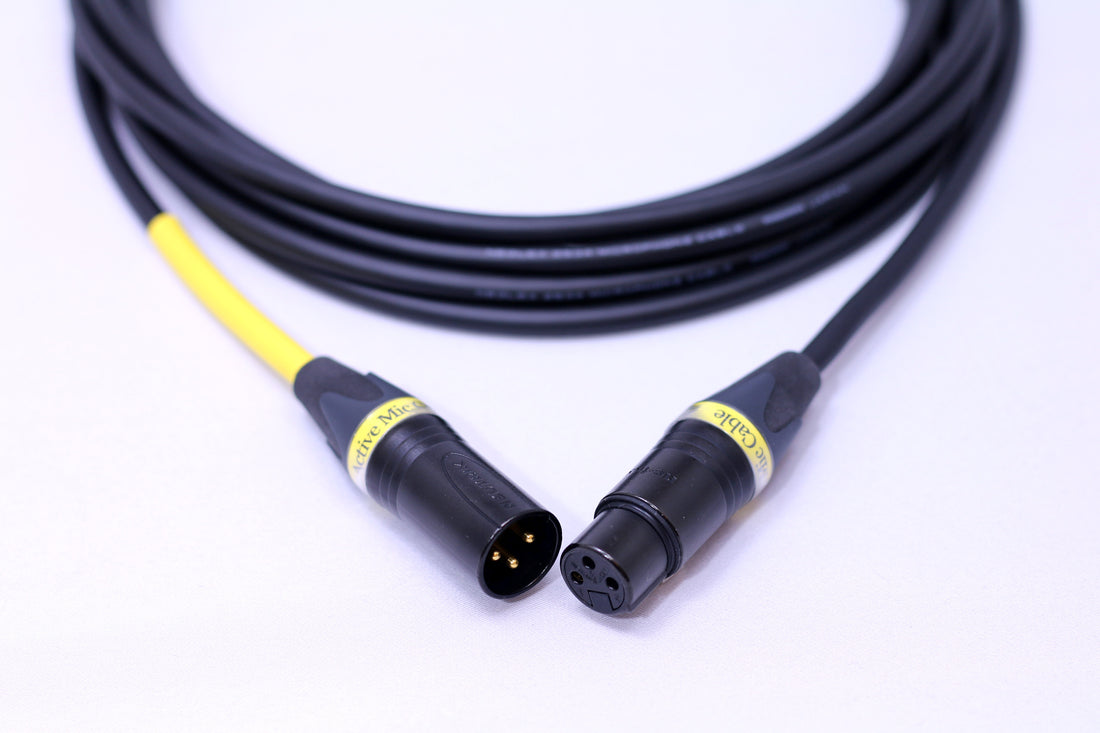Active Mic Cable?
Active Mic Cable" is a mic cable specially designed for dynamic microphones (moving coil / ribbon) which has active buffer circuit inside XLR(F) plug.  With controlling the electromagnetic braking that dynamic microphones have, it will achieve the wider dynamic range. The active buffer circuit that placed immediately after the microphone output will provide best impedance conversion and signal transmission from electrical and physical sides.
With controlling the electromagnetic braking that dynamic microphones have, it will achieve the wider dynamic range. The active buffer circuit that placed immediately after the microphone output will provide best impedance conversion and signal transmission from electrical and physical sides.
We'll take more deep look and explain the features.
The strength of electromagnetic braking will depend on flowing current and determined by the input impedance of connected device. If the impedance is low there will be more current flow and stronger breaking so the movement of diaphragm will be repressed. If the impedance is high current flow will be little and braking will be weak, it allows diaphragm to move freely. With that the diaphragm can react to faint signal so the sensitivity of microphone would be increased.
Also the braking will increase with loud signal because current flow will be big. But low impedance will limit the current so the braking will be little on bigger diaphragm movement and leads to the less compression and more open air sound.
Thus the dynamic range for both smaller and larger signal can be extended by receiving in the high impedance.
Now you understand the advantage of high impedance, but why most microphone preamps are designed in low impedance like about 300Ω~3kΩ? Of course, there are reasons for this.

Degradation of frequency response
The cable from microphone to preamp will be about 1 to 10m length so it need measure to reduce the degradation of sound quality. Long cable lead to bigger line capacitance and this will form a low pass filter which reduces the high frequency response.
Let's think here is a cable with line capacitance 1000pF for example. If you pair mic preamp with input impedance 10kΩ here, the cutoff frequency is about 16 kHz with input impedance. Which means the high frequency response is greatly reduced. If the input impedance is 1kΩ the cutoff is about 160kHz so it's far above the audible signal and frequency response can be improved. But there will be signal loss when input impedance is too low, so it has to be set to just good. Around 300Ω to 3kΩ makes sense, this is about same or slightly larger than output impedance of dynamic microphone. It will easily affected by the electromagnetic braking.

External noise
The input impedance of mic preamp works to very long area which is from microphone to preamp. If the input impedance is high, the noise like microphonic noise or electromagnetic noise will react stronger too. The impedance on the signal path looks low because it is terminated by the output impedance of the microphone, but it is sensitive that requires measure to the noise. The input impedance of mic preamp tends to set low in light of those problems.
Dynamic microphones with transformers
Some models of dynamic microphones have output transformer. The transformers are also applied electromagnetic induction like transducer so it's very effective to receive signal with high impedance. The electromagnetic damping of the transducer is also reduced with suppressing damping on output transformer. The reduction of braking works through the output transformer to the transducer, so the Active Mic Cable works perfect for microphone both transformer less and with transformer.

Ribbon microphones
Ribbon microphones are also dynamic microphones that work with electromagnetic induction. It will also apply to electromagnetic braking like moving coil microphones. Some of ribbon microphones has step up transformer inside to gain level. The braking will also bigger this case, so the Active Mic Cable is very useful.




